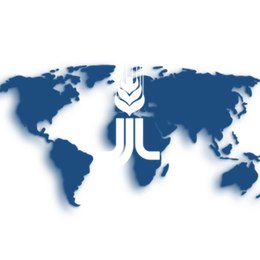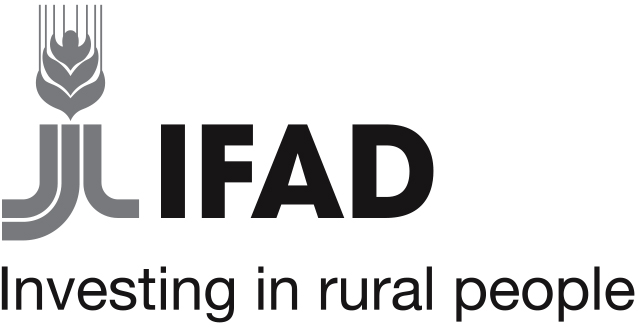Scaling up micro-irrigation in Guatemala, India and Madagascar
“The solution scales well, and can usefully be adopted by even the smallest farms."
BACKGROUND
Water shortage is fast becoming a global crisis, and farmers in impoverished areas are among the first groups at risk because of the high demand for water from irrigated agriculture. Micro-irrigation systems are simple to install and can reduce water consumption while increasing yield and income.
WHAT’S INVOLVED
Natural resource management
The technology helps farmers use less water, while getting the maximum benefit from every drop.
Innovative technology
The drip irrigation systems are simple to use and repair and versatile enough to be adapted to different conditions. They are made of lightweight plastic and can be mass-produced cheaply. The solution scales well, and can usefully be adopted by even the smallest farms.
Poverty alleviation
By using the drip irrigation systems to grow crops and to deliver fertilizer direct to the plant roots, farmers can grow high-value crops and increase their yields, so they can feed their families and make an income from selling any surplus.
EXPLORE THIS SOLUTION
The micro-irrigation project can offer
- an accessible, flexible technical solution for saving water in irrigated agriculture
- insights on developing a supply chain for the system and for promoting long-term adoption of micro-irrigation
Show Full Solution
Summary
With the world facing a water availability crisis, a solution focused on water-saving micro-irrigation systems (MIS) was adopted in Guatemala, India, and Madagascar. Its goals were to test and adapt the introduction of MIS, to assess the potential benefits, to establish a sustainable local supply chain for the required equipment and to stimulate demand for the technology.
Challenge
The increasing global water shortage is largely a result of consumption growing at more than twice the rate of population increase over the last century. Current forecasts indicate that by 2025, 1.8 billion people will be living in countries or regions with absolute water scarcity. Irrigated agriculture, which represents the bulk of the demand for water (around 80 per cent of fresh water consumption) and accounts for 40 per cent of food production, will be the first sector to be affected by increased water shortage.
Solution
The project addressed three issues to ensure a steady increase in food production and improve the income of impoverished farmers:
- Improving water management and water availability for intensified cropping activities with adapted MIS
- Improving agricultural productivity with MIS and liquid organic fertilizers in a practice known as fertigation – the application of fertilizers or other water soluble products through an irrigation system
- Raising awareness of the overall advantages of MIS and fertigation systems (using liquid organic fertilizer) in involved institutions, government and the private sector working in the field of irrigation/agriculture, andfostering the integration of MIS into their work and policies.
Drip micro-irrigation (DMI) systems were the primary type of MIS adopted in India, Guatemala and Madagascar. This is a simple, effective technology that makes optimal use of each available drop of water. It works through a system of plastic pipes and tubes which direct water from a reservoir to the roots of individual crop plants. Under this system, a solid underground plastic pipe with junctions and taps delivers the water to rows of flexible tubes with outlets that are buried at the base of each plant. Each row can be turned on and off individually, and the rate of interval watering is adjusted to the needs of each crop.
Adaptable to different terrains, functional on the smallest scale, simple and cheap to make, use, and repair, this system allows farmers to intensify production and introduce high-value crops. For a family farming at subsistence level, this can make all the difference; it means they can grow a supply of vegetables year-round for their own consumption while generating some income by selling surpluses. Thus, with a simple drip irrigation kit, a rural family can make a small but significant step out of extreme poverty.
The project adopted a market approach for the dissemination of locally adapted drip irrigation kits, by introducing the technology best suited to the local context and appropriate for the most vulnerable rural inhabitants. It then built a sustainable local supply chain for the irrigation equipment that makes the technology affordable and available, not just for the duration of the project but in the long term.
Results
In just three years, the pilot project was able to dramatically change the lives of 30,000 farmers and their families on three continents. Beneficiaries’ health, income and living conditions have improved significantly. The growing demand for the MIS kits is nearing a critical mass and making it possible to manufacture the kits domestically at competitive prices.
Basic outcomes expected when the program was launched included:
- increased farm productivity
- increased value of production
- reduction in the time required to carry farming activities
- water savings.
All three countries registered significant improvements on these objectives, the most notable being:
- increased yield per cropping cycle (India at more than five fold)
- increased family monthly income (India at about five fold)
- reduction in hours per month spent on managing irrigation (Guatemala and Madagascar at about 43 hours each)
- increased level of chemical pesticides application per cropping cycle (Guatemala and Madagascar at about 90 per cent each)
- longer cropping season in terms of additional weeks per year (Madagascar with 8 weeks)
- increased family savings per month (India USD 40, followed by Guatemala with USD 22 and Madagascar USD 14)
- water saved each month (Guatemala at 25,900 litres and Madagascar at 14,560 litres, which equals about 62 per cent savings in water consumption).
Lessons learned and potential for replication
Lessons emerging from the pilot broken down by country were:
Guatemala
Micro irrigation systems improved food and nutrition security, mobilization of farmers’ organizations was critical, and the pilot was leveraged with NGOs.
India
The technology proved to be affordable, supply chains were successfully established with the private sector, and warranty for equipment was readily available.
Madagascar
Technology was adapted, unit cost of local manufactured equipment was reduced, and a system for knowledge management was established.
Another lesson applicable to all three countries is the need to introduce incentives for farmers to conserve water. This could be done either through the introduction of volumetric delivery of water (i.e. each farmer receives a fixed amount of water per unit of land) or the introduction of a water charges (i.e. farmers have to pay for each cubic meter of water delivered to their farm).
Next steps
The next step is to expand the pilot within Guatemala, India, and Madagascar as well as in other countries.
Last update: 09/08/2018


